Wright’s repeated use of reinforced concrete frequently caused water damage. Built on a steep lot in the Hollywood Hills, Storer House created the illusion of a Mayan ruin barely visible within its jungle environment.
Movie producer Joel Silver bought the house in 1984 and spent a small fortune restoring it after years of damage from water leaking through the concrete walls and roof.
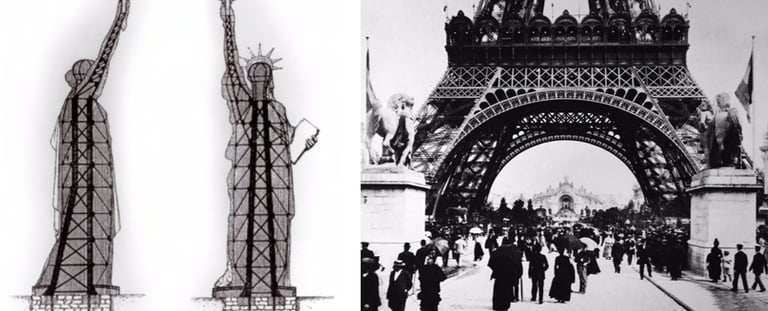

Gustave Eiffel was a French engineer whose first priority was structural integrity. An experienced bridge builder, he used mathematics to find ways to build lighter, stronger structures.
In 1879, he was hired to replace the chief engineer for the Statue of Liberty, who had died unexpectedly. The original engineer planned to stabilize the hollow statue by filling it with boxes of sand. Eiffel suggested a radical new idea: build an iron frame tower—a skeletal structure—and fasten the hollow statue to it.
He further improved the structural integrity of the statue by designing a secondary skeleton that allowed the statue to move slightly in strong winds. Without this added flexibility, the copper statue would have accumulated visible cracks over the years.
Eiffel’s design is one of the earliest examples of curtain wall construction: the exterior of the structure doesn’t bear the weight, the interior framework does.
Seeks Knowledge (NT) / Harmony (NF)
Gustave Eiffel (INTJ) / Frank Lloyd Wright (INFJ)
Figure 43: Structure for the Statue of Liberty (1883) and Eiffel Tower (1889)
He went on to design and build the Eiffel Tower, the tallest man-made structure in the world at that time. Decades of building bridges taught him a lot about designing strong, light-weight structures: the 984 foot tall tower would be less than three inches high at its base if the metal was melted down!
Frank Lloyd Wright was an architect who placed more value on beauty and visual harmony than he did on structural integrity. He created some of the most attractive buildings in America, but unlike Gustave Eiffel’s structures, many of Frank Lloyd Wright’s buildings had structural flaws.
Unity Temple in Oak Park, Illinois is made up of two buildings: a high-walled worship space connected by a foyer to a lower social hall and classroom building. The worship space is remarkably intimate, with outstanding acoustics and multilevel seating to ensure that no one would be more than 45 feet from the pulpit.
Given a relatively limited budget and a small lot located on a busy road, Wright built the place of worship out of reinforced concrete. To further reduce noise from the street, he placed the windows along the upper walls and the roof.


Figure 44: Frank Lloyd Wright's Unity Temple (1908)
But in 2009, Unity Temple was added to the National Trust for Historic Preservation’s eleven most endangered historic places. The internal drainage system Wright had approved was undersized and had caused water seepage. The drainage system at another of his buildings, Hollyhock House (1921), also had to be replaced.
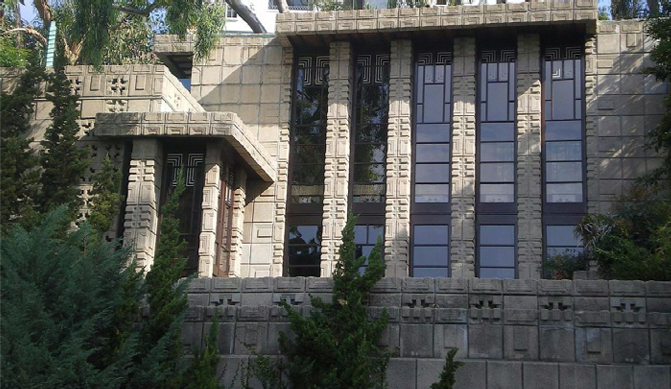

Figure 45: Frank Lloyd Wright's Storer House (1923)
Frank Lloyd Wright’s most famous architectural oversight was the lack of structural support for Fallingwater. Built over a waterfall in rural Pennsylvania, the residence is undeniably stunning. But the engineer assigned to build the cantilevered balconies was concerned that only eight reinforcing bars were used in the horizontal girder: he calculated there should be at least double that amount. When Frank Lloyd Wright heard of the desired correction, he was furious and threatened to quit.
With permission from the owner, the amount of reinforcing bars was secretly doubled. But the cantilevers still weren’t up to the task of holding the structure up, and defects appeared before the building was even completed. Two large cracks formed on the terrace’s protective walls as soon as the formwork was removed, and the floor of the home sagged noticeably.
Figure 46: Beauty of Fallingwater (1937)
In 1995, studies indicated that the living room terrace had dropped almost seven inches, cracks were widening, and the house would eventually fall into the water below if something wasn’t done to correct the situation. A massive renovation was needed to keep the building intact and safe for visitors.
Millions of dollars later, a secondary structural system was put in place to relieve the stresses on the original steel beams. Restorers of Fallingwater also dealt with water leaks in the roof seams, window seals, and skylights. The continuous water damage had created cracking walls, peeling paint, and warping doors. Mold and excess humidity was so bad, the owner nicknamed the house “Rising Mildew.”
Despite these problems, Fallingwater is widely considered a masterpiece.
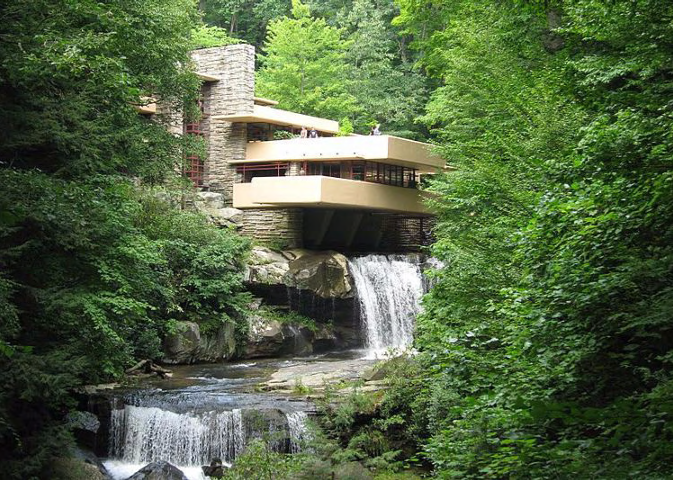

Leonardo da Vinci (INTP) / Marc Chagall (INFP)
Leonardo used his desire to seek knowledge to become an extraordinary artist. He combined his research in optics, the anatomy of the human eye, and the images displayed in the convex mirror of the camera obscura to become the first person to understand that only part of what we see at one time is in focus. The rest of our field of vision is slightly blurry. He also observed that images are not made up of outlines. He wrote that light and shade should blend “without lines or borders, in the manner of smoke or beyond the focus plane."
Leonardo invented a technique called “sfumato” that softens transitions between colors and imitates the slight blur that makes up most of what the human eye sees. The effect allows one form to merge with another and leaves something to the viewer’s imagination. That’s why Mona Lisa’s smile is so famous. Her expression is mysterious because he used sfumato around her eyes and mouth, the two features that best reveal someone’s mood. She captures our gaze, but her thoughts and mood elude us.
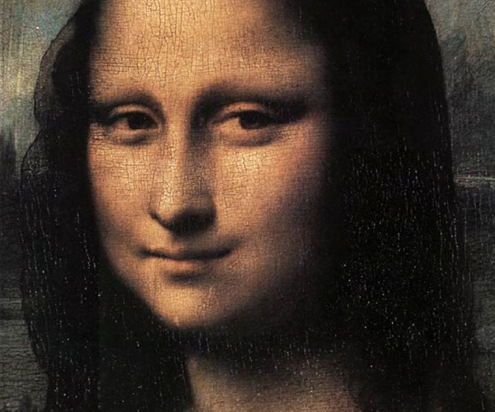

Figure 47: Mona Lisa's Mysterious Smile
He also added a visual trick. When we look into her eyes, they area around her lips blur since only part of what we see at one time is in focus. Our peripheral vision sees the shadows at the edge of her mouth, which give the illusion of a wide and pronounced smile. But when we look directly at her smile, it is small and elusive.
Strongest in Feeling, Marc Chagall created White Crucifixion in response to the violence that took place on November 9, 1938. That night Nazi troops destroyed nearly 1,400 Jewish places of worship, vandalized Jewish homes, schools, hospitals and businesses, and murdered a hundred Jews. Soon after that, more than 30,000 Jews were arrested and sent to concentration camps.
Chagall was a Russian Jew living happily with his wife in Paris at the time. But his anger, sorrow, and empathy moved him to create images full of emotion in what later became the favorite painting of Pope Francis.
The painting shows some of the horrors inflicted on the Jewish people: synagogues ransacked and torched, Jews forced to leave their homes and country in search of a place where they could live in peace, a burning Torah, a mother comforting a child, a man wearing a placard on his chest that labeled him as a Jew, refugees in distress attempting to escape on foot and by boat, and a Jewish village pillaged by soldiers.
Jesus on the cross is featured prominently in the center of the painting. Usually a symbol of Christianity, Jesus wears a headcloth instead of a crown of thorns, and a Jewish prayer shawl in place of a loincloth. For Chagall, Jesus was a symbol of the persecution and suffering of all Jews. It unites the two religions by reminding Christians that Jesus was born a Jew, lived his life as a Jew, and died a Jew.
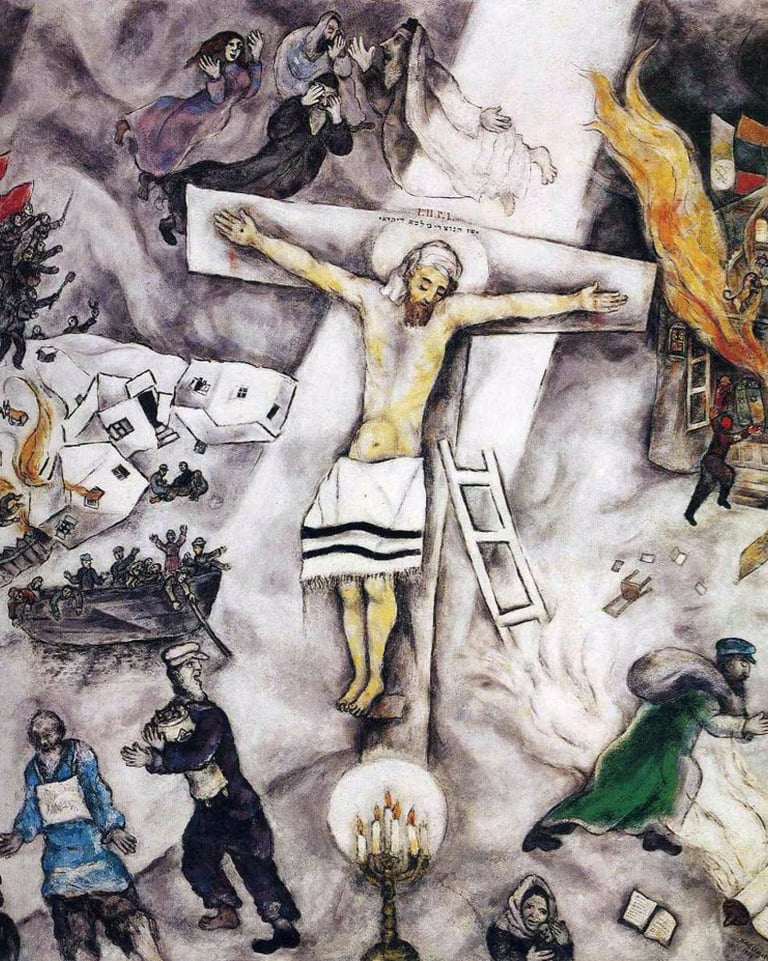

Figure 48: Chagall's White Crucifixion (1938)
The meaning of the four figures floating above the cross remains a mystery. The figure in a black robe covers his eyes while the female figure uncovers hers. The most distant figure has his thumb in his mouth while the figure closest to the beam of light from heaven is shouting a message for all to hear.

